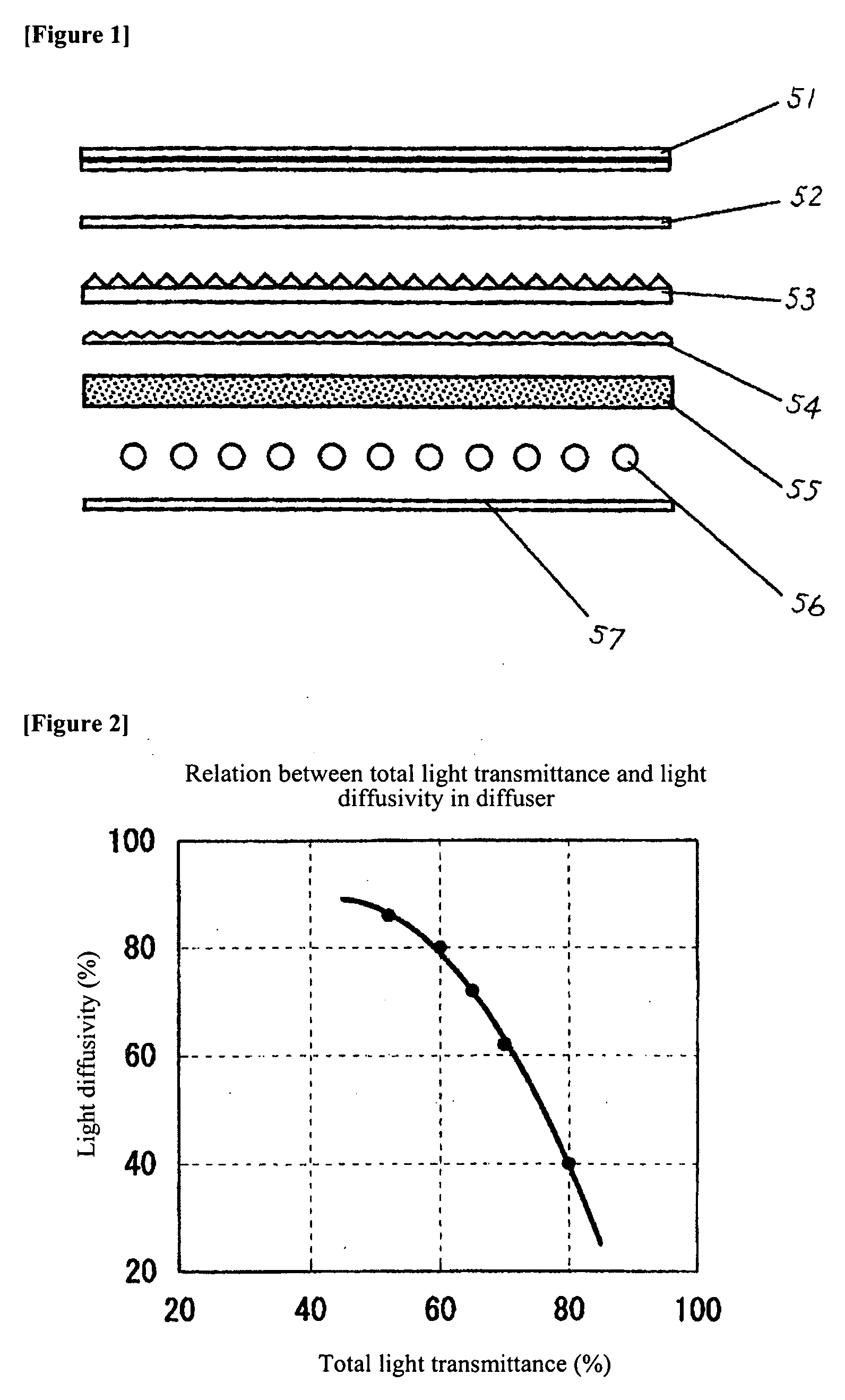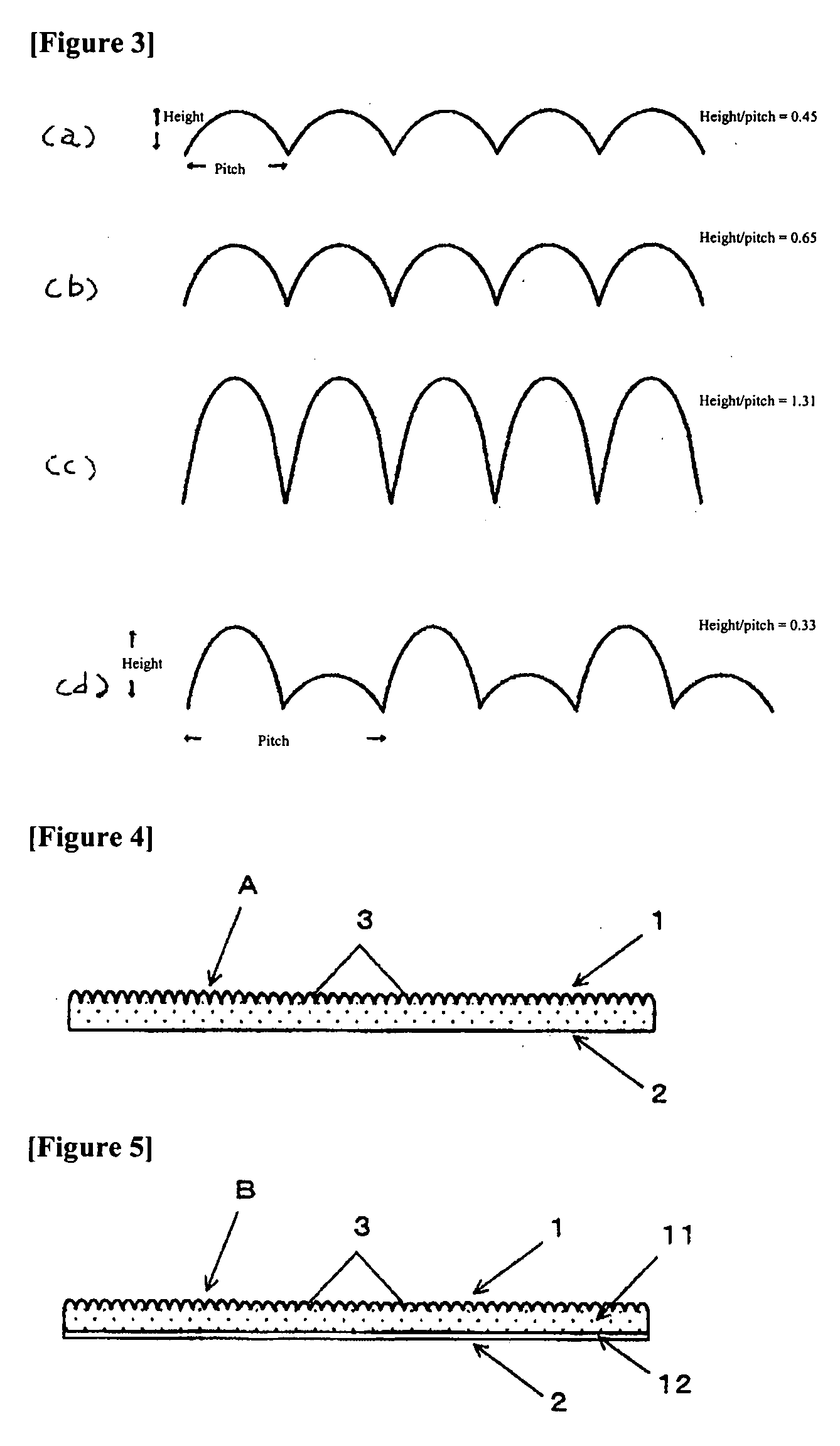Light-Transmitting Resin Board
a technology of light-transmitting resin and resin plate, which is applied in the field of light-transmitting resin plate, can solve the problems of not being able to achieve the effect of providing a higher screen luminance, reducing the reworkability of material containing additives, and not being able to recycle reworkable materials, etc., to achieve long-term optical stability of a backlight and achieve uniform surface light source, high luminance, and high luminan
- Summary
- Abstract
- Description
- Claims
- Application Information
AI Technical Summary
Benefits of technology
Problems solved by technology
Method used
Image
Examples
example 1
[0072]An acrylic resin (“Delpet (registered trademark) LP-1” manufactured by Asahi Kasei Chemicals Corporation) was used as a light-transmitting resin. The acrylic resin was blended with additives. As a light-diffusing agent, polymethylsilsesquioxane particulates having an average particle size of 2 μm was used in an amount of 0.002% by weight. An ultraviolet absorber, a light stabilizer, an antioxidant, a coloring material, and a matting agent were used as other additives. The total amount of the additives blended was 3.002% by weight. The blended material was extruded to obtain a light-transmitting resin plate having a thickness of 2 mm. The resin plate was heated to about 150° C. and thermo-compressed with a mold whose surface was carved into a semi-elliptic convex lens shape having a pitch of 120 μm and a depth of 45 μm to obtain a light-transmitting resin plate on which the same semi-elliptic convex lenses having a pitch of 120 μm and a height of 40 μm were formed. The ratio of...
example 2
[0074]A light-transmitting resin plate on which lenses are formed was obtained in the same manner as in Example 1 except that 0.03% by weight of the above light-diffusing agent was blended with the light-transmitting resin, and the total amount of the additives blended was changed to 3.03% by weight. The evaluation results are shown in Table 1.
example 3
[0075]A light-transmitting resin plate on which lenses are formed was obtained in the same manner as in Example 1 except that 0.90% by weight of the above light-diffusing agent was blended with the light-transmitting resin, and the total amount of the additives blended was changed to 3.90% by weight. The evaluation results are shown in Table 1.
PUM
| Property | Measurement | Unit |
|---|---|---|
| aspect ratio | aaaaa | aaaaa |
| aspect ratios | aaaaa | aaaaa |
| thickness | aaaaa | aaaaa |
Abstract
Description
Claims
Application Information
 Login to View More
Login to View More - R&D
- Intellectual Property
- Life Sciences
- Materials
- Tech Scout
- Unparalleled Data Quality
- Higher Quality Content
- 60% Fewer Hallucinations
Browse by: Latest US Patents, China's latest patents, Technical Efficacy Thesaurus, Application Domain, Technology Topic, Popular Technical Reports.
© 2025 PatSnap. All rights reserved.Legal|Privacy policy|Modern Slavery Act Transparency Statement|Sitemap|About US| Contact US: help@patsnap.com



